Here’s how it starts. You find some caterpillars on a Tropical Milkweed that you make sure has no pesticides on it. I found this out the hard way.
If your milkweed has pesticides, the caterpillars will vomit green liquid and act drunk and not be able to hold onto a leaf. They keep falling off of the plant!
The caterpillar up above is not acting drunk. He is just trying to find the best place to attach his chrysalis. He went around and around the rim of the container. He stretched up and over and all around. He never did find the place he wanted until we put him back on the milkweed plant.
The caterpillar will make a chrysalis, and he may choose a very strange, inconvenient place to attach it.
This one didn’t mind his unusual habitat. He went ahead and attached to the smooth side of the glass Mason jar we had been keeping him in so he couldn’t wander off and make his home somewhere that we couldn’t find him.
Crazy caterpillars might choose the inside or the outside of a glass Mason jar!
I asked Abby to get closer to the caterpillar, and she got so close it looked like the caterpillar was going to crawl right up her nose!
Get your adorable daughter to pose for a picture with a caterpillar on milkweed and see her cute little wave.
You may find yourself with a small herd of caterpillars at all stages of babyhood. Here we have a big guy chomping down on every leaf and flower he can find and another one hanging in a “J” as he starts to form his chrysalis. Meanwhile there are other caterpillars all over the plant doing assorted things, like resting, growing, molting or munching leaves. Right before they form the chrysalis, they have voracious appetites and will probably strip your plant clean of all leaves. Don’t panic! Just go to your local garden center and buy a new milkweed. But be sure to ask if it has been sprayed with pesticides. Don’t forget! It’s very important.
Your daughters just might fall in love with Monarch caterpillars.
When the caterpillar has eaten enough and reaches a length of about 2.5 – 3 inches, he will create a handy dandy chrysalis, a little house to wrap himself in so that he can undergo a transition that defies comprehension.
After two weeks, the chrysalis becomes transparent and you can begin to see the beautiful wings of a Monarch butterfly inside of it.
The process that God uses to transform the lowly caterpillar into a beautiful butterfly is a total meltdown and re-making of the cells to form a whole new creature. The cells of the caterpillar are called imaginal cells. They can change into something entirely new. They have to! The cells that used to be caterpillar parts now have to become butterfly parts. A cell that used to be part of a worm-like body becomes part of a wing or antenna or an eye or a slimmer body of a butterfly. It confounds even the most intelligent scientists. But God is able to make all things new!
And then one day, this happens!
And then your little girls may fall in love with Monarch butterflies!
And the cycle continues as you find other tiny caterpillars on your Tropical Milkweed and start all over again.
A beautiful, technically-correct, extremely informative and in-depth book about Monarch butterflies is a poetry book called “The Monarch’s Progress: Poems with Wings” by Avis Harley. I love this book!!! It is clever, witty and so well put together. You should really check it out!
You might like to read about our earlier adventures with caterpillars and butterflies in the posts under the category Caterpillar Chronicles in the sidebar.

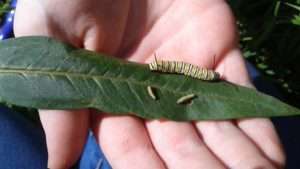

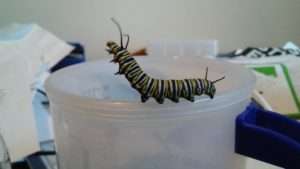
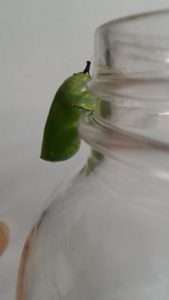
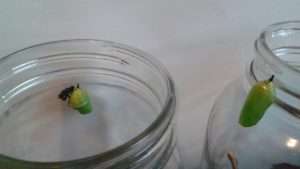


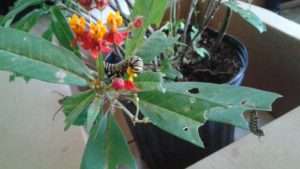

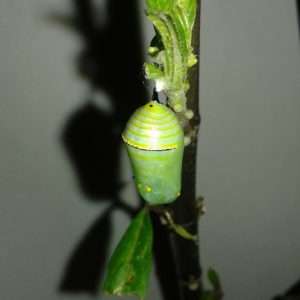

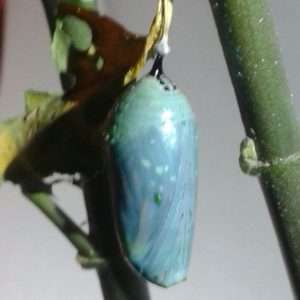
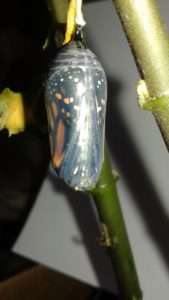

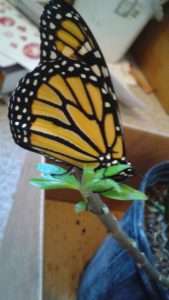

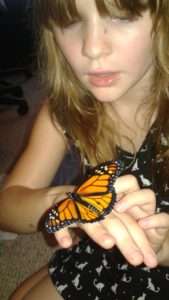
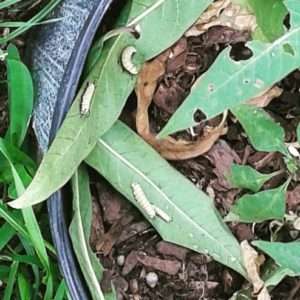
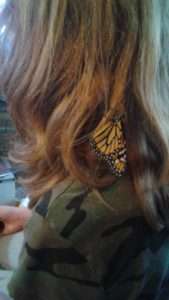
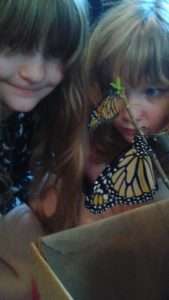

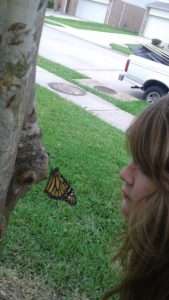








 "Oh that God would give every mother a vision of the glory and splendor of the work that is given to her when a babe is placed in her bosom to be nursed and trained! Could she have but one glimpse in to the future of that life as it reaches on into eternity; could she look into its soul to see its possibilities; could she be made to understand her own personal responsibility for the training of this child, for the development of its life, and for its destiny,--she would see that in all God's world there is no other work so noble and so worthy of her best powers, and she would commit to no other's hands the sacred and holy trust given to her." -JR Miller
"Oh that God would give every mother a vision of the glory and splendor of the work that is given to her when a babe is placed in her bosom to be nursed and trained! Could she have but one glimpse in to the future of that life as it reaches on into eternity; could she look into its soul to see its possibilities; could she be made to understand her own personal responsibility for the training of this child, for the development of its life, and for its destiny,--she would see that in all God's world there is no other work so noble and so worthy of her best powers, and she would commit to no other's hands the sacred and holy trust given to her." -JR Miller







What a sweet post! I especially loved all the pictures. Thanks for sharing it!